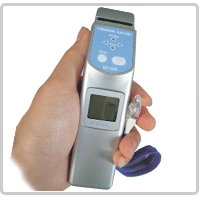With the introduction of fiber optics, the world of data transport and
telecommunications has experienced a significant shift. These microscopic glass
or plastic fibers carry information at light speed, allowing for high-speed
internet access, crystal-clear phone conversations, and quick information
sharing. The efficiency and quality of these optical fibers are guaranteed by
complex manufacturing procedures that take place in the background.
Ovens for Curing Fiber
A rigorous curing procedure is used for fiber optic cables to guarantee
maximum strength and longevity. Fiber
Curing Oven is essential for this stage. These ovens offer a
regulated setting for the polymerization of the epoxy resin coating on the
fibers, producing a strong and durable protective layer.
Precise temperature control, consistent heating, and programmed curing
cycles are the main characteristics of fiber-curing ovens. To produce fiber
optics consistently, several elements are necessary. The mechanical and thermal
characteristics of the fibers are directly impacted by the curing process'
effectiveness, guaranteeing that they can resist the demands of practical uses.
Films for Polishing Fibers
To provide the required optical clarity, the fibers are polished once
they have been cured. In this phase, Fiber Polishing Films are essential. These
films offer a controlled abrasive surface for refining the end faces of the
optical fibers. They are commonly composed of diamond particles contained in a
resin matrix.
To reduce signal loss and increase the efficiency of light transmission,
the accuracy of Fiber Polishing Film is essential. Because the
films are available in several grit sizes, producers can fulfill industry
requirements and obtain the appropriate surface quality. The outcome is a
polished fiber end face that enables efficient light coupling and eliminates
reflections, adding to the overall performance of the fiber optic system.
Machines for Crimping Fiber
Compressing a metal sleeve onto a fiber optic connection to ensure its secure attachment is known as crimping. By automating this vital process, the Fiber Crimping Machine provides uniformity and accuracy in the manufacturing of fiber optic connections. A strong connection that can resist mechanical stress and environmental variables is ensured by good crimping.
Follow our Facebook and Twitter for more information about our product.













